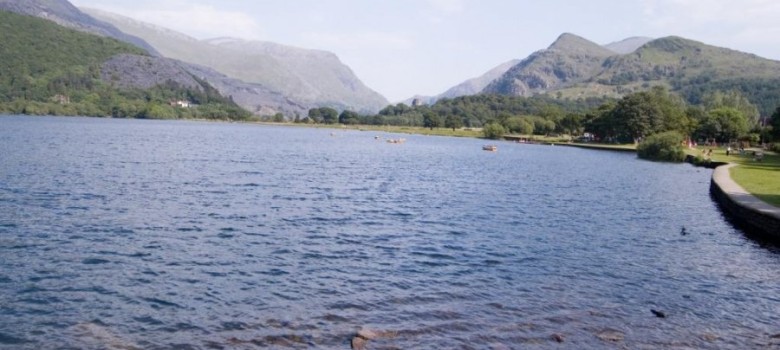
Background to the Dinorwig Hydroelectric Power Plant
The Dinorwig hydroelectric power station is an example of a pumped storage power station, where water is pumped into a reservoir above the turbines (called Marchlyn Mawr) when electricity is cheap and demand is low, the gates can then be opened providing a high supply of energy (although for a relatively brief period of time) to meet demand, as the water rushes through the turbines to the reservoir at the bottom of the power station (called Llyn Peris).
The plant construction started in 1974 at a cost of £425m taking a further 10 years to complete, and is still the largest pumped storage power station in Europe. In total, 16km of underground tunnels deep within Elidir Mountain where excavated, accounting for some 12 million tonnes of rock. To support the tunnels, one million tonnes of concrete, 200,000 tonnes of cement and 4,500 tonnes of steel were required.
The six fully reversible turbines sit within the mountain in what is actually the largest man made cavern in Europe. The turbines are reversible, allowing water to be pumped back up to the top reservoir when demand for electricity is low (in the middle of the night for example), while also producing an enormous amount of electricity if the water is allowed to follow the natural gravitational path downwards through them.
Why Was Dinorwig Chosen for Hydroelectric Power
When the water is stored in the top lake the energy that is being stored is known as gravitational potential energy, and the greater the vertical distance between the two lakes, the higher the potential energy stored. This is key to why Dinorwig was chosen, as the vertical drop between the two reservoirs is naturally very large, therefore little additional work had to be undertaken to increase the natural gravitational energy potential.
As one might expect pumping the water back up into Marchlyn Mawr (the top reservoir) is significantly more energy intensive than the energy it provides when working as a power station, in fact it uses almost 33% more energy to get the water back up than it produces. However where this hydroelectric power plant is unique is the ability to react quickly to meet peak in demand and instantly provide the power required (unlike Nuclear and Coal power plants). It also takes seven hours to pump the water up to the Marchlyn Mawr reservoir, however will only generate power for five hours.
Why Is Pumped Storage so Important to the UK
This kind of plant is very important to our energy mix in the UK, as most electricity generating plants are very slow to react to changes in demand. For example nuclear power plants can take a few days to reach full power from a shut down state, while coal will take hours to fire up and get up to the temperatures required to drive the electrical and combustion processes. In 12 seconds the plant can go from shut down state to full operating capacity, allowing it to meet very sudden high demand, such as a TV soap advert break when people put their kettles on!
The plant however does suffer from one disadvantage, which is that if all the water is in the Llyn Peris reservoir at the bottom of the power plant, it can produce no power whatsoever. Therefore, governments need to ensure that the majority of peak demand can be met via the less reactive power stations such as nuclear.
Potentially, one might not even consider the Dinorwig as a renewable power station, but simply a means of storing electricity / energy produced by other power stations, however it still has a key role to play in our grid that we rely on every day, vastly increasing our flexibility of supply.












Why do our power suppliers pay wind generators not to generate when they could put excess power into Dinorwig ?
Why do we not build many more hydro storage plants ? how many are required ?